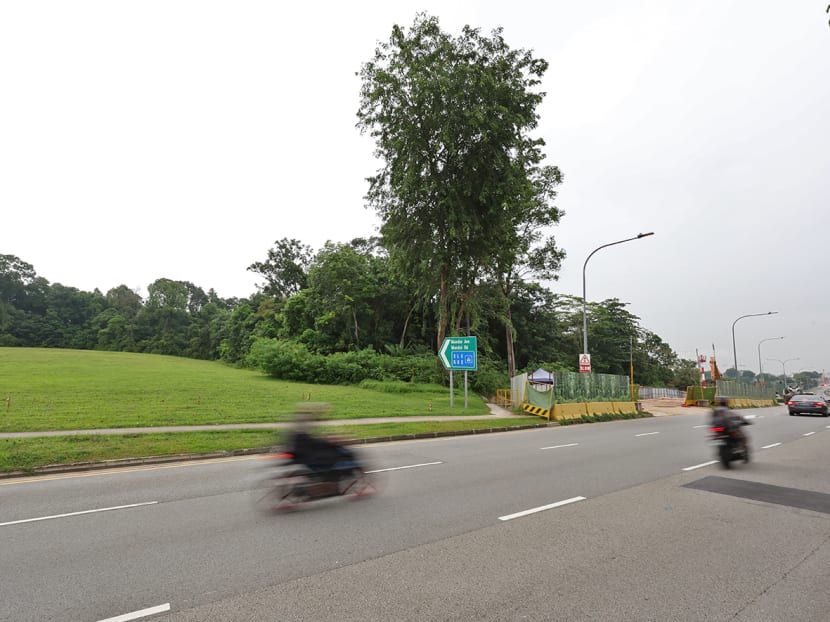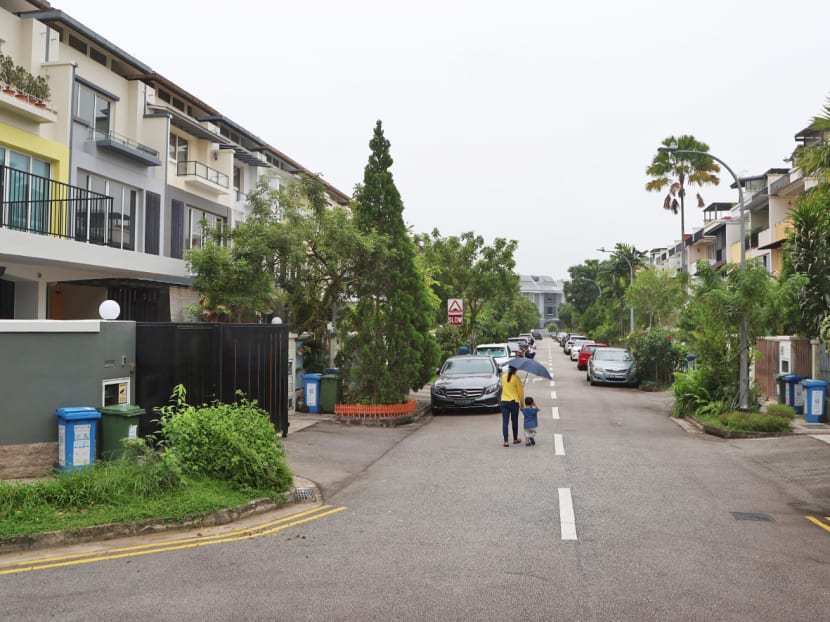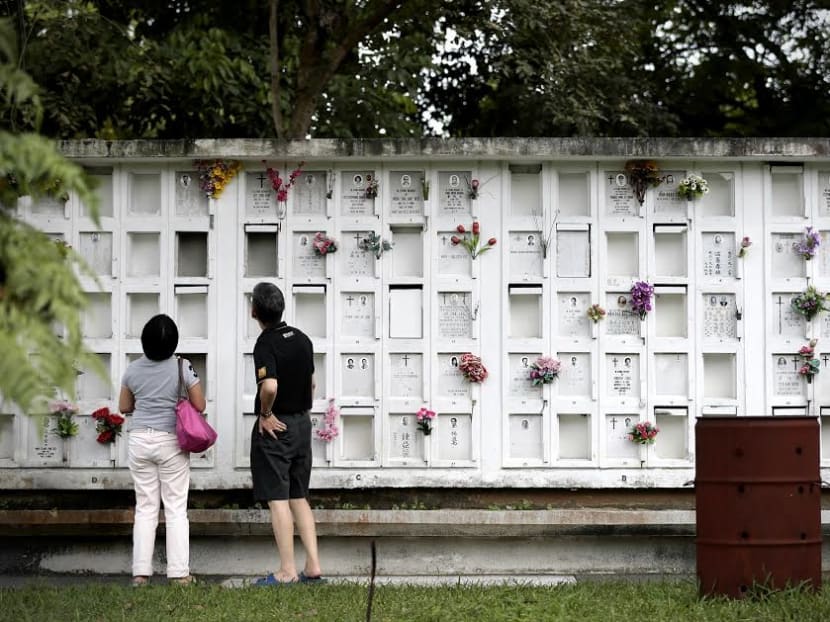Commentary: Controversy over new Mandai columbarium — how to develop more after-death facilities without trodding on residents’ concerns?

The intersection of Mandai Avenue and Sembawang Road has been identified for a proposed funeral and columbarium complex.
The National Environment Agency (NEA) on Dec 18, 2023 announced it had identified a plot of land at the intersection of Mandai Avenue and Sembawang Road for constructing new funeral services and a columbarium complex.
The agency also plans to conduct a feasibility study and an environmental impact assessment on the construction and post-construction stages of the proposed development.
The announcement caused surprise and concern from residents near the subject area, especially those in landed housing areas bounded between Springside Ave and Sembawang Road as well as nearby condominiums, such as Hong Heng Mansion, Forest Hills Condominiums, The Essence and The Brooks I and II.
For residents affected by the proposed development, the reasons for their displeasure are not unfounded.
They are rightly concerned about the possible negative externality of having a columbarium placed so close by, which could adversely affect housing price appreciation. One resident expressed concern that the project could dampen the proposed en bloc sale of his development.
Some also believe that the siting of the columbarium would not be good for the "feng shui" (wind and water in Chinese geomancy) of the neighbourhood and its surrounding areas.
Given a say, some residents would, understandably, rather have the columbarium built somewhere else, but "not in my backyard" — a phenomenon also known as Nimby.
Existing residences aside, the proposed columbarium development is even closer to future residential planning areas, which are directly opposite the subject site and bounded by Sembawang Road, Yishun Ave 1, Yishun Ave 2, and Bah Soon Pah Road.
Those set to become residents in these areas should incorporate potential negative externality in future prices as they deem fit.
One past example is the upcoming ParkEdge@Bidadari Housing and Development Board estate, where applicants in the Build-To-Order project were made aware of the redevelopment of the new Mount Vernon funeral parlour.
The new parlour complex occupies only 1.1 hectares — about one-seventh of the size of the current Mount Vernon Columbarium, which it will replace when completed and starts operations in 2024.

DEMAND FOR AFTER-DEATH SPACE
With the ageing population, the NEA projects that the number of deaths in Singapore will increase from 26,891 in 2022 to about 40,000 in 2040. Thus, more land needs to be set aside now to meet the anticipated demand for after-death facilities.
The Government faces the challenge of allocating enough land for funeral services and columbaria niches without sacrificing other competing land uses.
In a small but highly urbanised city like Singapore, it is harder to isolate the space for the living from the dead. After-death spaces will inevitably be placed closer to housing and industrial areas over the years.
Standalone columbariums, such as Woodlands Memorial, built in industrial estates, will probably face less resistance from neighbouring users, but better traffic management will be required.
The Nimby effects were less of a concern for columbaria that are located close to cemeteries, army camps, and agricultural lands, such as Chua Chu Kang Columbarium, and other private parlours, such as Nirvana Memorial Garden, the Garden of Remembrance, among others.

MITIGATING NEGATIVE IMPACT ON RESIDENTS
During the urban renewal process, older cemeteries have previously been exhumed to give way for commercial and housing uses, especially those located near the city centre.
One example is the Orchard Road shopping belt, where the former Teochew Cemetery was exhumed to make way for the Ngee Ann City development.
In developing, operating and managing the proposed Mandai columbarium, other than the environmental impact assessment to reduce environmental impact, the Government should work closely with residents to avoid negative economic costs, if any, arising from the development.
If the project location cannot be changed, this will help alleviate the anxiety and worries of residents.
First, the authority can mitigate negative externality by incorporating more prudent, sensitive designs and features into the project — for example, to mask the building from the public eye.
One resident suggested that the main gate to the columbarium facilities could be located along Mandai Road, which is further away and not visible to residents.
Authorities may also consider building in a buffer zone of about 400 to 500m between housing areas and the complex to further alleviate residents' concerns.
Second, collocating the columbarium building with other religious uses, such as the Yishun Columbarium built side-by-side with Chu Siang Wah Sua Temple, is another strategy that could help complement land demand for religious uses.
Examples include the Yishun Columbarium (built side-by-side with Chu Siang Wah Sua Temple), and Kong Meng San Phor Kark See Monastery at Bright Hill Road (both a columbarium and temple).
However, it will be important to communicate clearly to residents when such use is intended. In 2015, Fernvale Lea residents in Sengkang were upset when they found out about a proposed columbarium use in a Chinese temple there.
Third, the state can plan to expand road capacity, increase public transport services, and improve traffic management to minimise inconvenience to the residents in the area caused by the new columbarium.
It can further offset any negative economic effects on residents by improving neighbourhood facilities and amenities.
One such strategy is to build public parks for residents near the subject site — already done in the case of the old Mount Vernon Columbarium site, part of which was safeguarded and converted into Bidadari Park to provide more recreational space for future residents in flat developments in the area.
The more urbanised a city becomes, the harder it is to push the dwindling backyard further into the suburbs. The idea of living next to the dead is not the most desirable, but this tension is only expected to increase in the future.
While new buyers should be informed of after-death facilities and sites when making purchase decisions, authorities should also strive to ensure that existing residents who have no say on any new developments are not made worse off when such facilities are built.
ABOUT THE AUTHOR:
Sing Tien Foo is the provost's chair professor at the Department of Real Estate, NUS Business School. These are his own views.

No comments
Share your thoughts! Tell us your name and class for a gift (: